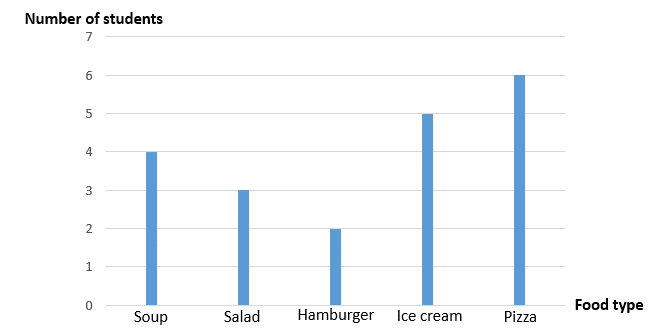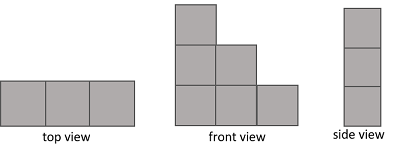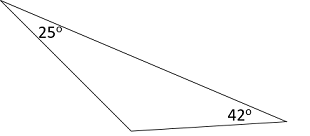What Is the NWEA MAP Growth Test?
The MAP test is a computer-adaptive assessment used across K–12 schools. It is a standardized test that helps educators understand their students' strengths and weaknesses, as well as identifying gifted children. This page offers free and premium MAP practice questions by grade, subject, and skill level — helping students improve scores and reduce test anxiety.
MAP Practice Tests by Grade (2025)
Try Free Sample Questions or Jump to Full Pack ➜
- Kindergarten–1st Grade – Math & Reading Warm-Up Questions
- 2nd–5th Grade – Enriched simutimed practice
- 6th–8th Grade – Advanced sample questions
- 9th–12th Grade – Full-length challenge sections
What Makes Our MAP Practice Different?
Other sites offer quizzes. We offer MAP test PrepPacks with full-length simulations, matching the real structure, scoring, and difficulty progression of the exam.
Download our comprehensive MAP Test Prep Guide PDF.
Free MAP Test Kindergarten Sample Questions
Tutor Tip for Parents:
Explain to your child that sentences can either tell us something or ask something.
Read the sentence: “What is the name of your teacher” and ask, “What do you think — are we asking or telling?”
If your child says it’s a question, praise them and point out that questions always end with a question mark.
Tip: Let them draw a big question mark and decorate it! This helps make the lesson fun and memorable.
Free MAP Test 1st Grade Sample Questions
Free MAP Test 2nd Grade Sample Questions
Free MAP Test 3rd Grade Sample Questions
Free MAP Test 4th Grade Sample Questions
Free MAP Test 5th Grade Sample Questions
Tutor Tip for Students:
When I answer reading questions, I always go back to the text to prove my answer — it’s like being a detective and finding the exact clue. Even if I think I know it, I double-check the passage to make sure I’m right. It really helps me feel more confident in my answer.
Free MAP Test 6th Grade Sample Questions
Free MAP Test 7th Grade Sample Questions
Free MAP Test 8th Grade Sample Questions
Free MAP Test 9th-12th Grade Sample Questions
MAP Test FAQs
MAP Growth is a computer-adaptive test commonly used in K–12 schools to measure a student's academic progress over time. It adjusts the difficulty of questions based on the student’s responses, providing a personalized assessment experience. The test evaluates skills in subjects like math, reading, and language usage, offering insights into each student's strengths and areas for improvement. It also helps identify students who may be gifted or in need of additional support.
One of the key elements of the NWEA MAP Test is its adaptive capabilities. The test adjusts the questions difficulty based on the student's responses in real time, simulating a dynamic approach. If your child answers a question correctly, the test will present more challenging questions to inquire their understanding of above grade levels..
This test is aligned to the Common Core State Standards, ensuring that it measures skills and knowledge relevant to your child's grade level. This adaptive interaction allows MAP Growth to measure academic progress more accurately than conventional tests. The format is beneficial in two ways: it prevents students from feeling discouraged by encountering questions beyond their understanding, and it also provides a detailed and nuanced picture of what the student knows. The MAP test is often used in international schools as either part of the entrance process or as interim testing to track student progress throughout the academic year.
Scores for the NWEA MAP are reported using the RIT scale (Rasch unIT). The RIT scale is an equal-interval scale, like a ruler with inches. The student will not be graded on the percentage of questions answered correctly but on the level of questioning to which they progress. An RIT score indicates the level of questions that he or she is estimated to answer correctly 50% of the time.
Since all grades are scored according to an objective indication of progress from kindergarten through high school, higher grades will naturally score higher; the same score that is advanced for 3rd grade would be average for 5th grade. This system allows schools and students to measure progress and academic growth from year to year. Read more about how the MAP test is scored and how to interpret your child's progress on our MAP Growth Scores page.
The MAP Growth Test and the STAAR Test serve different educational purposes with distinct features.
The NWEA MAP Test is an adaptive assessment that measures academic growth in subjects like math, reading, language usage, and science. It adjusts the difficulty of questions based on the student's responses, providing a personalized evaluation. This makes MAP testing unique as it helps track a child's academic progress over time. Many parents supplement this learning with maths sheets and reading comprehension exercises at home.
On the other hand, the STAAR Test is a standardized state assessment administered in schools around Texas. This assessment evaluates a child's knowledge in core subjects at the end of each grade level, and utilizing readily available sample questions can be an excellent way for students to familiarize themselves with the test format and content. Unlike MAP Growth, STAAR is not adaptive but is designed to measure specific state education standards and the overall performance of the education system. Understanding these differences can help parents and educators choose the right assessment to meet their child's school requirements and support their academic growth effectively.







